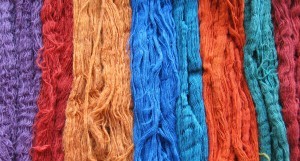
Life would have been black and white, if colors weren’t invented! This shows the significance of dyes in our life. The process of dyeing dates long back, where these dyes were extracted, from different plants and animals. However, with time, man created synthetic dyes, which definitely are now used worldwide. These dyes have become an essential part of textile, paper, printing ink, food, cosmetic and paint industry. The application depends on the type of dye being used and the chemical with the help of which it is made:
Types of dyes:
- Reactive Dyes: These dyes are most commonly deployed in the textile industry. This form of dye has capability to directly react with the fiber substrate, providing better fastness properties to textiles. Their best use can be seen on cotton and other cellulose fibers. Also, one can find further sub-divisions of reactive dyes such as Cold dyes, Hot dyes, Bi-Functional, Vinyl Sulphone and High exhaust dyes.
- Basic Dyes: These dyes act in the presence of acetic acid to aid the transference or uptake of dye onto the material that is to be colored. Maximally, paper and textile industry take advantage of basic dyes. These are known to yield better brightness and are easily applied on cotton, paper, and leather. They are also used for acrylic, woolen and silk fibers. However, one can also find its usage in ink, petroleum and agrochemical industries.
- Direct Dyes: As the name suggests, this variety of direct dyes is very easy to use. Usually, one needs to add sodium chloride or Glauber salt to the dyebath, while carrying out the dyeing. It is normally done in neutral medium at or near the boiling point. They are most widely used in paper, textile, coir, jute, ink and leather.
One can paint any color on any fabric by using these dyes. The colors of these dyes are basically of two types: primary and secondary. Primary color are the ones which are obtained naturally; whereas, secondary colors are a result of mixing of two primary colors. These dyes can be found in powder as well as liquid forms. Also, the packaging varies from some grams to certain Kilograms, which depends on the supplier you are buying the dyes from. Whenever purchasing, any type of dye, ensure that the quality of dye is worth the price.
You just need to find out the right type and the right service provider for your work. Make sure to check and cross check about the services provided by the dealers before you purchase. Since the fashion industry is always going to blossom, the process of dyeing materials really can’t stop ever. Therefore it becomes very crucial to ensure the color bleeding doesn’t happen with washing of dyed textiles. If the property of colorfastness is maintained, not just you, but your customers will be happy too. With the help of varieties of dyes present in the market one can really turn an ugly duckling to a beautiful swan.